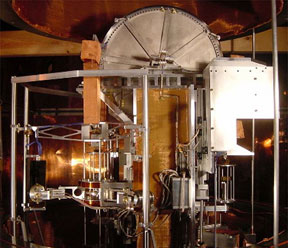 (NIST: Gaithersburg, MD) -- Taking the first steps of what would be a major historical advance in the science of measurement, the National Institute of Standards and Technology (NIST) is participating in a worldwide effort to recommend major revisions to the International System of Units (SI), the modern metric system that is the basis of global measurements in commerce, science, and other aspects of everyday life.
(NIST: Gaithersburg, MD) -- Taking the first steps of what would be a major historical advance in the science of measurement, the National Institute of Standards and Technology (NIST) is participating in a worldwide effort to recommend major revisions to the International System of Units (SI), the modern metric system that is the basis of global measurements in commerce, science, and other aspects of everyday life.
|
ADVERTISEMENT |
The new SI, which would be based on seven constants of nature, would enable researchers around the world to express the results of measurements at new levels of consistency and accuracy. The seven SI base units from which all others are derived are the second (time), the meter (length), the kilogram (mass), the ampere (electric current), the kelvin (thermodynamic temperature), the mole (amount of substance) and the candela (luminous intensity).
…
Add new comment